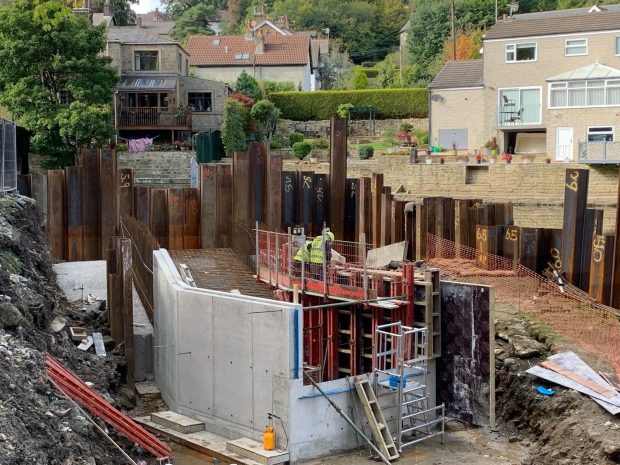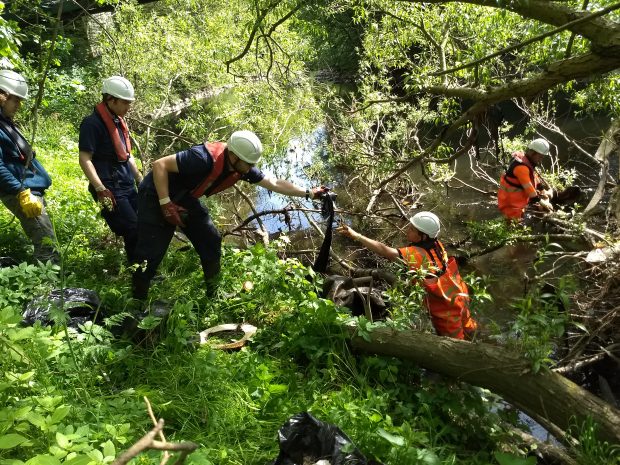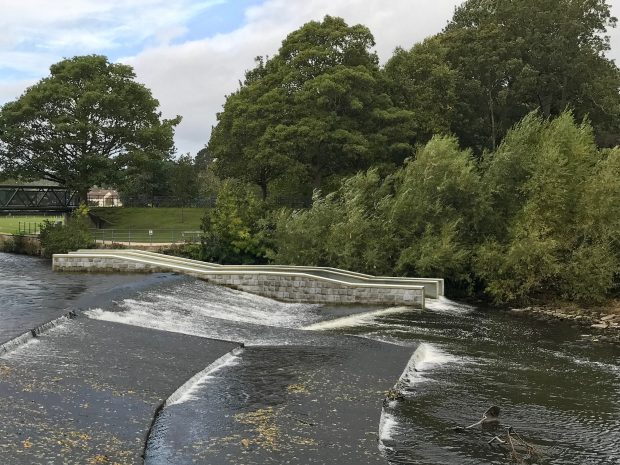
DNAire involves the construction of four fish passes, which will benefit coarse fish as well as salmon by allowing them to move up and down the river. They need to do this feed, breed and shelter throughout the year.
An equally important facet of the project is to provide a three-year community engagement programme including a range of training and education opportunities as well as volunteer clean-up days.
The project first took shape when Martin Slater (then Environment Agency Environment, Planning and Engagement Manager for Yorkshire Area) and I bumped into each other at a copying machine back in 2016, but little did we know we were conceiving a project that would consume us for the next few years.
The bold step we agreed was to formally collaborate on developing the DNAire project and submitting a funding application to the (then) Heritage Lottery Fund.
The partnership raised funding from the Environment Agency, Craven District Council, Yorkshire Water, The National Lottery Heritage Fund (NLHF) and several smaller funds, enabling a major transformation of this great river.
After 12 months of effort our initial National Lottery bid was rejected, but we did not accept ‘no’ for an answer and we set about learning the lessons (mostly to put more resource and effort into the community engagement part of the bid). We then re-wrote the application, successfully re-submitting it and receiving 50% funding towards detailed development of the project and ultimately £706,000 towards delivery.

The commitment in principle by The NLHF, and the accompanying 50% funding for detailed project development, led to a 15-month period at the end of which we were ‘shovel ready’ with the Environment Agency leading on design and construction of the fish passes, including all the necessary internal and external permissions – not easy when all four locations are Grade 2 Listed and one is on the very boundary of a UNESCO World Heritage Site – Saltaire.
Aire Rivers Trust (ART) is leading the community engagement design and delivery. Our Community Engagement Officer (Simon Watts) has worked with specialist heritage fund consultants (Heritage Insider) to research the geography, history, ecology, demographics, community desires (and barriers) as part of writing a detailed ‘Activity Plan’.
The Activity Plan outlines the actions we are taking to engage the community and the rationales for the project and those actions – all 188 pages plus 11 appendices now adorn many a desk in our offices and significantly strengthened relationships with stakeholders in the catchment.
This was a rigorous piece of community engagement in which we listened to individuals and organisations with few preconceptions before figuring out the best way of delivering benefits to the heritage, the community and the individuals involved.
The EA talk about EDD – Engage, Develop, Decide when formulating projects. I saw and continue to see this through the eyes of an organisational development specialist in which the people and the relationships are as important - I might even argue more important - as the task.
That the EA team working on the project won the internal Yorkshire ACE award in 2019 for their collaboration on this project clearly demonstrates how effectively this model worked.
Now almost 12 months into delivery, we are into the next key stage – Reflect, Review and Rework – and the four fish passes should be complete before the year end with the community engagement piece progressing well despite the constraints caused by Covid-19.

Congratulations are due to the whole team who have continued to work through the last few months in ways that have needed constant re-invention – Adaptive Management in action!
We continue to develop new guided walks, deliver stewardship days offering a growing band of volunteers the chance to ‘do their bit’ and connect with nature, work (in very different ways to those anticipated pre-Covid) with schools as part of the STEM agenda, run photography and writing competitions, and demonstrate hydrology and geomorphology.
But there is much more to come by way of activities to re-connect the communities along the river with their glorious natural heritage.
Without the collaboration with the Environment Agency it is highly unlikely that we would have been able to pull this off alone.
Total transparency and constant communication were the critical factors in developing and sustaining the relationship and whilst not everything went smoothly all the time, as in all lasting relationships, we worked through the glitches and came out stronger.
This project has transformed the way our Trust sees itself and we are an increasing power in the catchment. I cannot speak too highly of the EA’s Martin Slater and the wider Agency’s commitment to making this challenging project work.
With this project we are doing our bit to put back something that was lost and help rebuild biodiversity for the people and communities of West Yorkshire.
https://www.youtube.com/watch?v=JZpEHaihKrY
For more information, go to https://dnaire.org.uk
Follow the Yorkshire and North East Twitter account.

Leave a comment